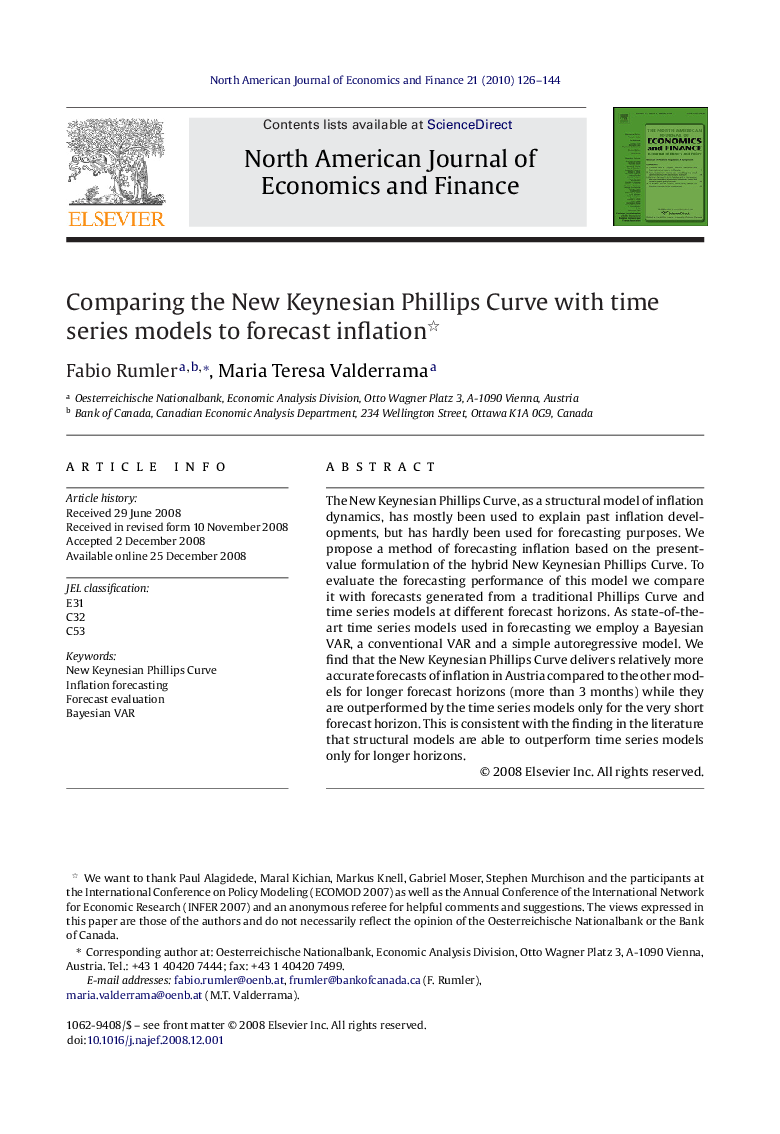| Article ID | Journal | Published Year | Pages | File Type |
|---|---|---|---|---|
| 975419 | The North American Journal of Economics and Finance | 2010 | 19 Pages |
The New Keynesian Phillips Curve, as a structural model of inflation dynamics, has mostly been used to explain past inflation developments, but has hardly been used for forecasting purposes. We propose a method of forecasting inflation based on the present-value formulation of the hybrid New Keynesian Phillips Curve. To evaluate the forecasting performance of this model we compare it with forecasts generated from a traditional Phillips Curve and time series models at different forecast horizons. As state-of-the-art time series models used in forecasting we employ a Bayesian VAR, a conventional VAR and a simple autoregressive model. We find that the New Keynesian Phillips Curve delivers relatively more accurate forecasts of inflation in Austria compared to the other models for longer forecast horizons (more than 3 months) while they are outperformed by the time series models only for the very short forecast horizon. This is consistent with the finding in the literature that structural models are able to outperform time series models only for longer horizons.
